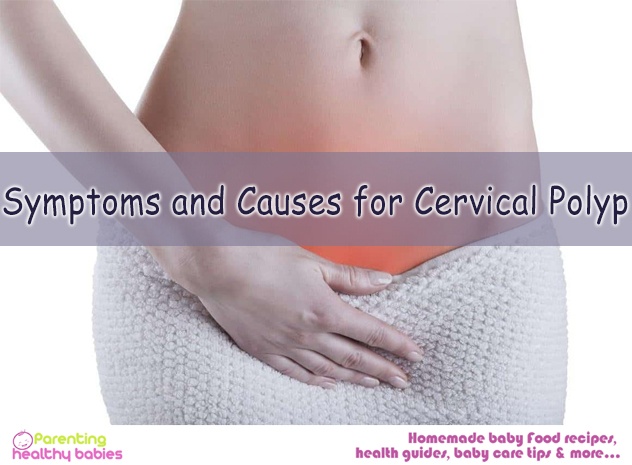Finger like growths in the area between the uterus and the vagina are known as cervical polyp. They are common among women above 20 years of age. They are usually smooth in appearance, red in colour and usually one or more in number. Cervical Polyps rarely cause any symptom, and are not usually diagnosed until you go for a pelvic examination. Even if detected, they can be removed easily. Cervical Polyps generally do not recur after removal. A vast majority of cervical polyps are benign. However, they should be always screened for presence of malignancy or otherwise.
Causes for cervical polyp
The causes of cervical polyp are not fully known. However, there are few common causes for cervical polyps. They are
- Cervical infection
- Chronic inflammation of vagina, uterus, or cervix
- Abnormal response to estrogen
- Clogged blood vessel in cervical canal.
Symptoms of cervical polyp
Women having cervical polyp may display no symptoms generally. However in certain cases symptoms like abnormal vaginal bleeding between menses, after sexual intercourse or after menopause and vaginal discharge of yellow or white mucus may occur. This mainly occurs when the polyps are infected and that is rare.
Abnormal vaginal bleeding is the most common symptom of cervical polyps. So don’t get alarmed if you observe spotting between after or prior your menses. However, if the polyps have grown bigger then you may experience heavier flow.
Difference between cervical polyp, uterine polyp and uterine fibroid
1} Uterine fibroid
While fibroids can be disruptive to the fertility and pregnancy process, they are not known to be malignant. They are considered to be hormone induced tissue growth and are mostly wedged within the wall of the uterus. Some of these also grow inward towards the wall of the uterus.
Uterine fibroids occur within the uterine cavity and are made up of muscle uterine tissue. Uterine polyps also occur within the uterus, but they are made of the endometrial lining tissue. On the other hand cervical polyps occur outside uterus or in the neck of the uterus. The difference is apparent not only in location of occurrence, but also in the degree of severity.
If you have uterine fibroids you may experience heavy bleeding, pelvic pain, enlarged uterus and constipation. However, one nagging problem with fibroids is that they do not regress. In fact they continue to grow in size along with the development of the foetus. These can vary in size from miniscule to large ones and usually shrink in post-partum and menopausal women. These can be removed with the help of non-invasive ways.
2} Uterine polyps
These polyps also occur within the uterine cavity, but are made up of the tissue that is lining the uterus. They almost always grow outward and are small in size compared to fibroids. Another unique thing about these polyps is that these can regress in size. However, they cannot be removed without surgery. There is no non-invasive way to remove them. However, your physician can control these polyps with the help of hormone balancing drugs. However, this will not do away with the symptoms.
The symptoms of uterine polyps are similar to those of cervical polyps, if any. However, one added concern regarding uterine polyps is that they can also affect fertility.
Uterine polyps are not so benign as fibroids though they are seldom known to be cancerous. So doctors always test uterine polyps for malignancy.
3} Cervical polyp
These are also growths or skin tags that occur in the neck of the uterus called the cervix. These are made of the tissue that makes up the cervix. Growth can occur on the stalk and in some cases it may be like a finger like growth. But whatever be the type they are not large in size and can even regress in size with time.
They can also be removed easily. Physicians can remove these things with the help of some special forceps called polyp forceps. The polyps are also not known to be malignant.
Types of cervical polyp
You can have two types of cervical polyps – ectocervical and endocervical.
1} Ectocervical polyps develop from the outer surface layer of the cervix. These are mostly seen in post-menopausal women. On the other hand,
2} Endocervical polyps develop from the tissue inside the cervical canal. Commonly cervical polyps are endocervical ones and are seen in many pre-menopausal women.
Treatment of cervical polyp
Polyps are generally removed during pelvic examinations. Physicians usually tie a polyp at the base and give it a twist at the top to remove the stalk. These can also be removed with special polyp forceps. After removal a medicine is applied at the base to stop bleeding.
Prevention
Annual pap smear, pelvic examination and other gynaecological tests can ensure that cervical polyps can be nipped in the bud. This is essential since these growths don’t have any symptom. However, if you have grown larger polyps then you are at the risk of heavy bleeding and other symptoms.
To conclude women who have cervical polyps have no other form of symptoms except infertility. The symptoms would include vaginal bleeding that could occur after intercourse or any form of douching.
The exact cause with regards to the occurrence of cervical polyps is not clearly understood. Medical science has not been able to pinpoint the exact reasons, though infection happens to be the main cause. Though the two major types of polyps tend to be found in the rectum and colon.
References
https://www.healthline.com/health/cervical-polyps#overview1
https://medicalfoxx.com/vaginal-polyps.html
